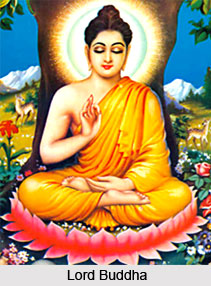 Places of worship in Hinduism earlier were restricted under the trees to the open sky. Aryans started worshipping elements of nature in the open. The Dravidians worshipped the emblems of their goddesses under trees. They were surrounded with the images of snakes. Aryans and Dravidians began erecting temples for worshipping of Gods before the birth of sectarian cults. However sectarian cults like Vaishnavism and Shaivism gave rise to erection of temples. They followed the example of the Buddhists who had erected dagobas for the preservation of Lord Buddha`s relics.
Places of worship in Hinduism earlier were restricted under the trees to the open sky. Aryans started worshipping elements of nature in the open. The Dravidians worshipped the emblems of their goddesses under trees. They were surrounded with the images of snakes. Aryans and Dravidians began erecting temples for worshipping of Gods before the birth of sectarian cults. However sectarian cults like Vaishnavism and Shaivism gave rise to erection of temples. They followed the example of the Buddhists who had erected dagobas for the preservation of Lord Buddha`s relics.
In the Vedic age as such there were no temples. Fire was worshipped as it represented God. This holy fire was lit on a platform in the open air. It is uncertain when exactly the Indo-Aryans started building temples for worship. As human beings progressed temples became important as they served as a sacred meeting place for the community to revitalize their spiritual energies.
To worship the village Gods or Aiyanir, a rude stone was fixed sometimes in the open-air or under a tree. Sometimes they were worshipped in a temple which was built with mud walls and thatched roof and sometimes with more substantial materials as per people`s ability. The structure was used for religious purposes and for transacting the civil affairs of a village. The temples of Lord Vishnu and Lord Shiva were more elaborate. They were built with massive square shaped stones; and the roof rested partly on the walls and partly on huge monoliths. The chief idol is placed in Garbha griha which is a small pyramidal structure in the temple. Earlier temple structures were possibly made of clay with thatched roofs made of straw or leaves. Cave-temples were also prevalent in remote areas and hilly terrains.
Some temples were large structures that had extensive outer courts and buildings for the accommodation of priests and visitors. The entrance was under a Gopuram which was ornamented in relief with Hindu mythological characters. Figures of Gods and Goddesses were carved on the pillars and the walls which enclose these temples. The growth phase of Hindu temples has witnessed its rise and fall according to various dynasties that ruled India. The rulers in fact contributed and influenced the building of temples, especially in South India
The country of India is filled with temples. Almost every village has one or more temple. The money required for daily conduct of the temple activities came from the revenues which were derived from lands given by former devotees like kings and wealthy men or voluntary gifts given by the visitors.




















